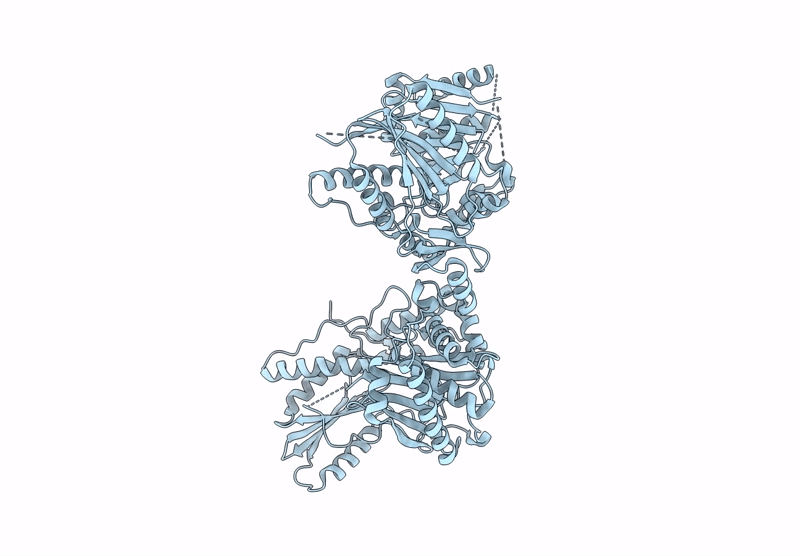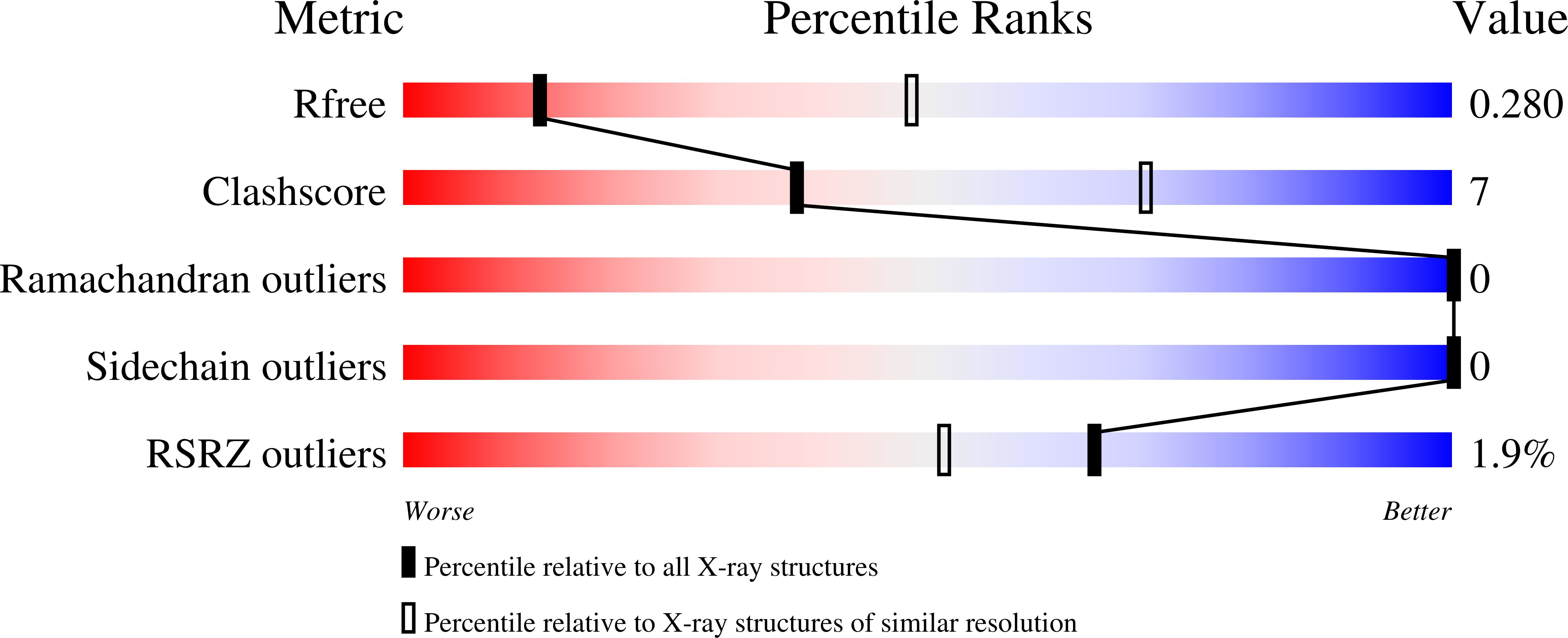
Deposition Date
2025-06-02
Release Date
2025-08-06
Last Version Date
2025-09-17
Entry Detail
PDB ID:
9RDE
Keywords:
Title:
Crystal structure of the B. licheniformis bacitacin sythetase 3 cis-E-COM-C domains
Biological Source:
Source Organism:
Bacillus licheniformis (Taxon ID: 1402)
Host Organism:
Method Details:
Experimental Method:
Resolution:
3.29 Å
R-Value Free:
0.28
R-Value Work:
0.23
R-Value Observed:
0.23
Space Group:
P 41


